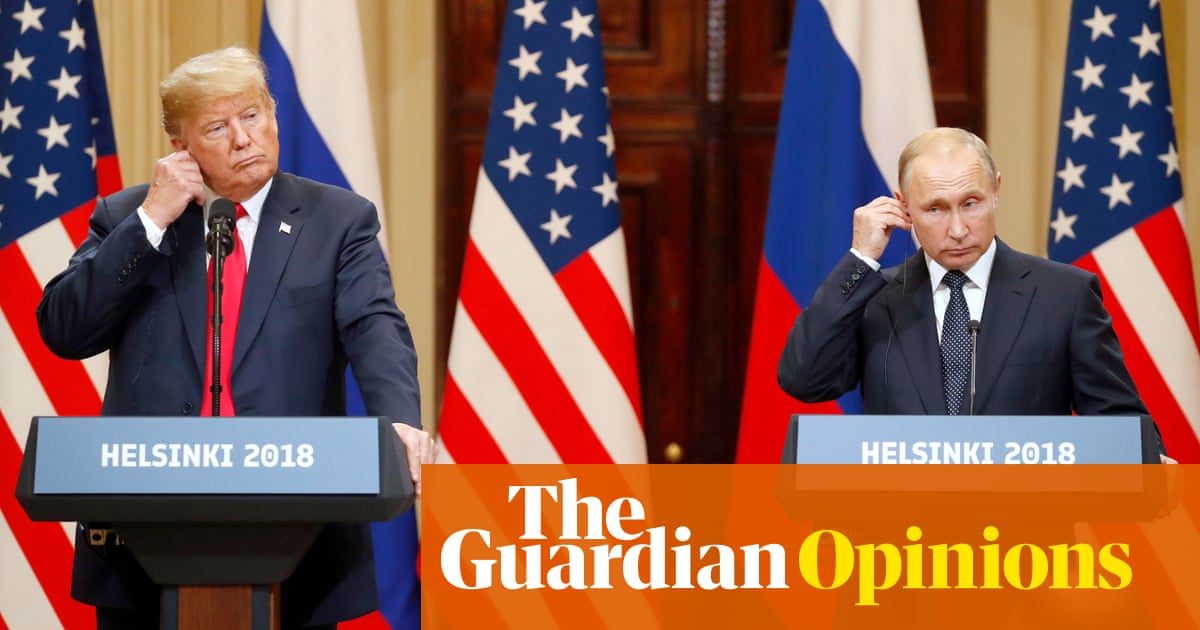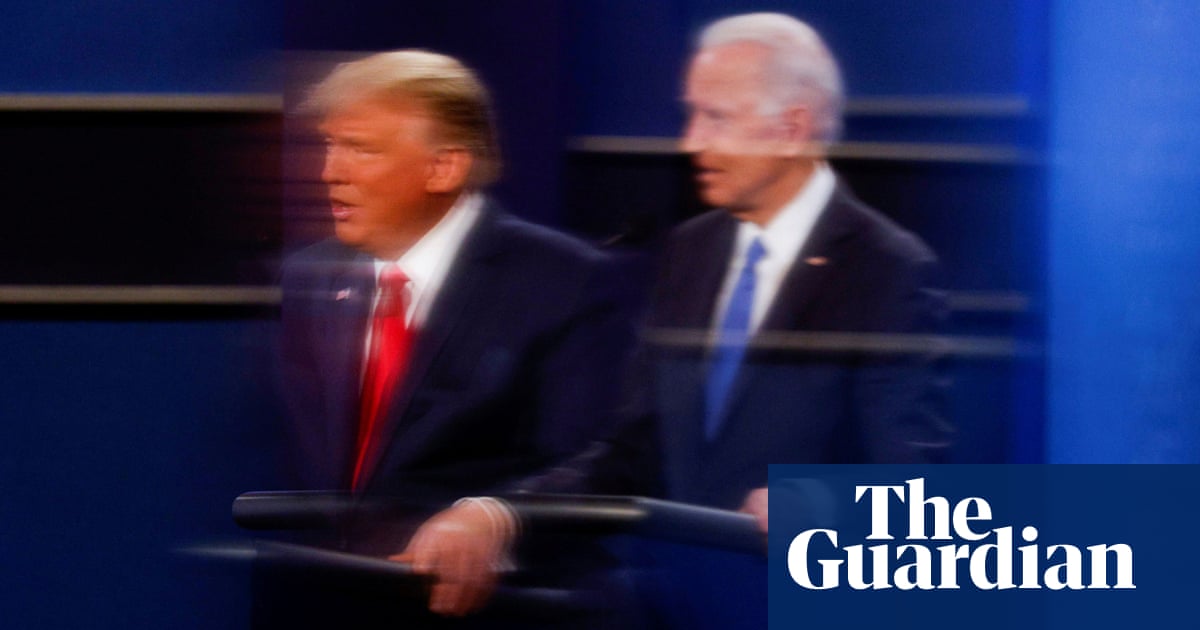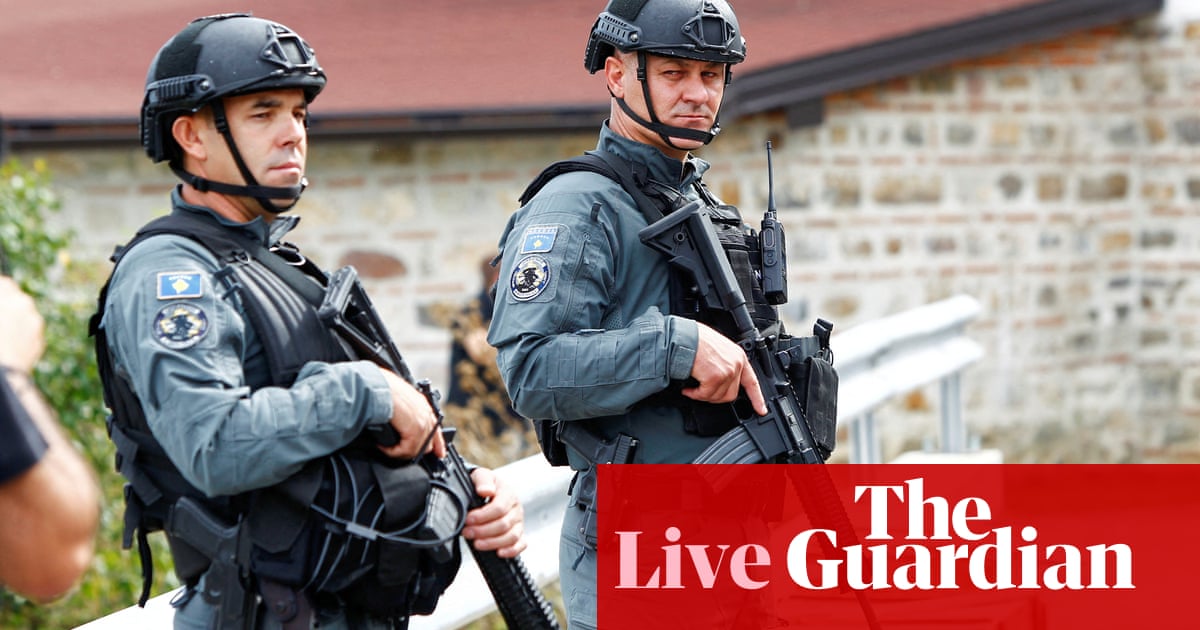
On 6 June, Europe will celebrate the 80th anniversary of the D-day landings that began the liberation of western Europe in 1944. However, there’s another round anniversary this summer that won’t be celebrated, because it marks a big failure. On 30 August 1954, a vote in the French national assembly killed the project of a European Defence Community (EDC). Instead, European integration proceeded around the economic community that remains the core of the EU to this day, and European security was built around the US-led Nato. But as the Russian president, Vladimir Putin, advances from the east and the US presidential contender Donald Trump threatens to withdraw from the west, it’s time to revisit the idea of Europe defending itself.
Historical circumstances were obviously very different 70 years ago, but there are some interesting echoes. Then as now, a key driver for the European defence initiative was an aggressive Russia. Then as now, another driver was the desire of the US to focus more on threats involving China in Asia – in that case, the Korean war, which began in 1950. (The EDC treaty was signed in 1952, while the war was still going on.) Then as now, a central issue was the military role to be played by the Federal Republic of Germany. France’s then prime minister, Pierre Mendès France, summed up the reasons his parliament rejected the EDC with perfect French clarity: “too much integration and too little England”. Might there also be a lesson there?
Today, a European defence project would not be a single, clear, unified institution of the EU. That was the road not taken 70 years ago. Rather, it would be a European defence community with a lowercase d and c, connecting European, bilateral and national capabilities to the existing military operational core in Nato. If you ask what are the structures of European security today, the answer is at once mind-numbingly complicated and perfectly simple. The result of multiple initiatives to strengthen European defence is an impenetrable jungle of acronyms and monikers. How will SHAPE work with CJEF and JEF, taking account of the St Malo declaration, the “Berlin Plus” agreement, Pesco, EDF, EPF, Asap and EDIRPA? (You really want to know?)
At the same time, it’s very simple: 80 years on from D-day, Europe still depends on the US for its defence. In slightly longer form: Europe depends on Nato for its defence, and Nato depends on the credibility of the article 5 guarantee from the US. Credibility is the key word for deterrence, as confidence is for financial markets. Strictly speaking, article 5 only commits a Nato member to take “such action as it deems necessary, including the use of armed force”, if an ally is attacked. So where will Europe be if President Trump doesn’t “deem it necessary” to defend Estonia? Or, prior to that, if Putin no longer believes – perhaps miscalculating, as he did over Ukraine – that Washington would do so.
The most likely Trump shock is that he will pull the rug out from under Ukraine. Europe must therefore urgently increase its ammunition and weapon supplies and its training for the Ukrainian army so that Kyiv can not merely defend the territory it currently controls but actually turn the tide of the war in 2025. This should be Europe’s objective even if Trump does a handbrake turn on US support and tries to negotiate a deal with Putin over Ukraine’s head.
Second, Europe must do more for its own conventional defence. Unlike the first Trump presidency, his second is being carefully prepared, with detailed plans drawn up by friendly thinktanks. The Heritage Foundation’s 2025 presidential transition project defines the relevant goal thus: “Transform Nato so that US allies are capable of fielding the great majority of the conventional forces required to deter Russia while relying on the United States primarily for our nuclear deterrent and select other capabilities, while reducing the US force posture in Europe.”
If we’re honest, isn’t this a reasonable ask? Eighty years after D-day, why should a continent with an economy of similar size still depend so heavily on the US for its security?
In a market economy, arms manufacturers need large, definite orders before they ramp up production, and Europe’s defence industry is not getting enough of those, fast enough. As Ukrainian soldiers have found to their cost, it’s also a crazy zoo of different weapon types. A Munich security conference study identified 178 types of major weapon systems in European armies in 2016, compared with 30 in the US. In practice, increased European defence spending would also mean more business for the US. As the Nato secretary general, Jens Stoltenberg, pointed out in a speech last month to the Heritage Foundation, US arms manufacturers already received European orders worth $120bn over the last two years – an argument that should appeal to “art of the deal” businessman Trump.
What if it’s a Force 9 Trump shock, meaning the US president undermines the credibility of American nuclear deterrence defending the Baltic states? Unlikely though that eventuality is, we need to start thinking more about European nuclear deterrence. Under the 1962 Nassau agreement, Britain’s rather clunky old nuclear deterrent is put at the disposal of Nato, which means theoretically also for the defence of the Baltic states – although the ultimate decision lies with the British prime minister. France’s nuclear doctrine does not specify over whom precisely the president will extend his nuclear parasol. “Mourir pour Dantzig?” was the notorious headline of a 1939 French newspaper article, arguing that French soldiers should not be asked to die for what was then the Free City of Danzig (today’s Gdańsk). “Mourir pour Narva?” would be the question now – Narva being an Estonian city right on the border with Russia. No other European power has a nuclear deterrent.
I list these three levels of Trump shock in ascending order of gravity, but also of probability. Europe’s priorities should follow: first, Ukraine; second, spend more and better on conventional defence; third, think about the ladder of nuclear deterrence. To achieve any of this, every country, institution and tendency involved needs to jump over its own shadow. Politically difficult though this will be, European defence procurement must reduce its narcissism of national difference. Britain and its continental European partners must work more closely together. The two Brussels-based giants, Nato and the EU, need a better working relationship. Gaullists and Atlanticists should seek common ground, understanding that a more European Nato is the only credible military core of an effective European defence community today.
Perhaps someone would like to convene a conference to discuss all these issues, on the 70th anniversary of a historic failure? Conference motto: don’t be scared, be prepared.
Timothy Garton Ash is a historian, political writer and Guardian columnist












